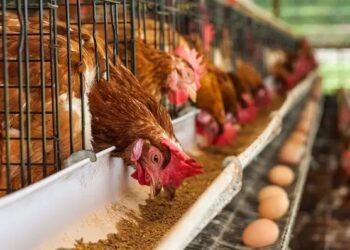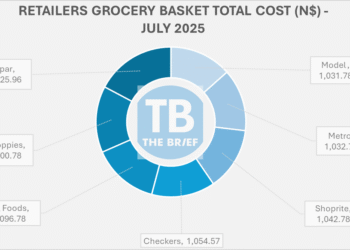
By Hanks Saisai
Wintertime offers an opportune time for farmers to grow a variety of cool weather loving crops. Vegetables grown at the right time typically thrive and grow optimally, producing significant yields.
Namibia has seven crop production zones, namely Zambezi, Kavango, KARST, North Central, Central, South and Orange, according to the Namibian Agronomic Board (NAB).
During winter, farmers in these zones can grow a variety of winter vegetables such as onions, cabbage, lettuce, beetroot, carrots, broccoli and cauliflower to meet local demand.
Onions (Allium cepa) are a common crop that can be grown during the upcoming winter season. This crop prefers a range of soils, but loamy soils conventionally produce better results for farmers. The ideal soil for growing onions should be well-drained, with good aeration and a soil pH range of 5.5 to 6.5 (slightly acidic conditions).
Onions require temperature ranges of 18 – 22 0C during the day and wintertime offers such temperatures for optimal growth. The ideal planting time for onions is the end of March to the beginning of April, and the seeds can be sown directly into prepared planting beds. Onions have a growing period of 90 to 155 or 200 days, depending on the variety grown by the farmer.
The common spacing recommendations are 15 to 20 cm between rows, 7 to 10 cm within rows, and a sowing depth of 0.5 – 1 cm. Adding manure during land preparation is recommended, but it is essential for farmers to test the soil for accurate fertilizer application.
Farmers can also apply NPK (2:3:2 or 2:3:4) throughout the growing period. Moreover, the water requirements for onions range from 400 to 600 mm over the growing period, and if planted accordingly, a farmer can achieve an average yield of 30 tons per Hectare.
Cabbage (Brassica oleracea) is another common crop that can be grown during the winter season. This crop prefers a range of soils, but loamy soil produces the best results for farmers.
The soil should be well-drained with good aeration and contain an abundance of organic matter to supply sufficient nutrients. The soil must have a soil pH range of 6.5 to 7 (slightly acidic to neutral soils). Cabbages require temperature ranges of 15 to 20 oC during the day and can tolerate frost up to – 3 oC, and wintertime offers such temperatures for optimal growth.
The end of March to the beginning of April offers an ideal planting time for cabbages. Cabbage seeds must be sown in seedling trays, and at a later stage, the farmer can transplant the seedlings into prepared seedbeds until they reach maturity. Cabbages have a growing period of 85 to 90 or 120 days, depending on the variety grown. The common spacing recommendations are 50 to 70 cm between rows, 40 to 50 cm within rows, and a sowing depth of 0.5 – 1 cm in the seedling trays. A soil test should be conducted to ensure correct fertilizer application, however, the addition of manure at soil preparation is ideal.
Moreover, cabbages may prefer Nitrogen-rich fertilizers, such as Urea or chicken manure can be an ideal organic fertilizer (NB: Do not make use of fresh chicken manure, it must be 2 months old before you can use it). The water requirements for growing cabbages range from 440 to 500 mm over the growing period. If planted correctly and properly cared for, a farmer can achieve an average yield of 40,000 to 50,000 heads per Hectare.
Beetroot (Beta vulgaris) can also be grown during winter, known for its nutritious roots. This crop can also be grown in a wide range of soils but prefers loamy soil for good results. The soil should be well drained with good aeration and must have a soil pH range of 5.5 to 6.5 (slightly acidic soil condition). The ideal day temperature for growing beetroot should range from 15 to 20 oC for optimal growth. The end of March and beginning of April offer an ideal planting time, and beetroot seeds can be sown directly in the seedbeds or seedling trays and later be transplanted by the farmer. Beetroots have a growing period of 60 to 90 days, depending on the variety.
The commonly recommended spacing requirements of beetroot are 40 cm between rows, 10 cm within rows, and a depth of 1 – 2 cm in beds or seedling trays. A soil test should be conducted to ensure correct fertilizer application, however, adding manure at soil preparation is ideal to ensure the soil supplies essential elements. Beetroot has water requirements ranging from 400 to 600 mm over the growing period. If planted correctly and properly cared for, a farmer can achieve an average yield of 20 tons per Hectare.
Lettuce (Lactuca sativa) is another common crop that can be grown during winter, known for its nutritious leaves that are often popular in the fast-food industry. Lettuce can be grown in a range of soils, but loamy soil is always ideal for optimal yields. The soil should be well-drained with good aeration and must contain a lot of organic matter to provide sufficient nutrients. The soil pH should range from 6.5 to 7 (slightly acidic to neutral soils).
Lettuce requires temperature ranges of 15 to 20 oC during the day and can tolerate frost up to – 3 oC, and wintertime offers such temperatures for optimal growth. The end of March to the beginning of April offers an ideal planting time, and lettuce seeds must be sown in seedling trays.
The seedlings can be transplanted at a later stage into prepared seedbeds until they reach maturity. Lettuce has a growing period of 45 to 75 days, depending on the variety grown by the farmer. The commonly recommended spacing requirements for lettuce crops are 60 cm between rows, 30 cm within rows, and a sowing depth of 1 – 2 cm in beds or seedling trays.
Correct fertilizer application requires a farmer to conduct a soil test, however, adding manure during soil preparation is ideal. Due to its leafy nature, lettuce may prefer Nitrogen-rich fertilizers, such as Urea or chicken manure can be an ideal organic fertilizer (NB: Do not make use of fresh chicken manure, it must be 2 months old before you can use it).
The water requirements for lettuce crops range from 440 to 500 mm over the growing period. If planted correctly and properly cared for, a farmer can achieve an average yield of 20 tons per Hectare.
Other crops that can be grown by farmers during winter include carrots, broccoli and cauliflower. Ideally, farmers should grow crops driven by market demand, and it is equally vital to secure a market before venturing into the production of these crops.
Moreover, if a farmer‘s production site is larger than 0.5 Hectares (5,000 m2), it is essential to register as a producer with the Namibian Agronomic Board (NAB).
*Hanks Saisai is a Technical Advisor: Crops and Poultry at Agribank











